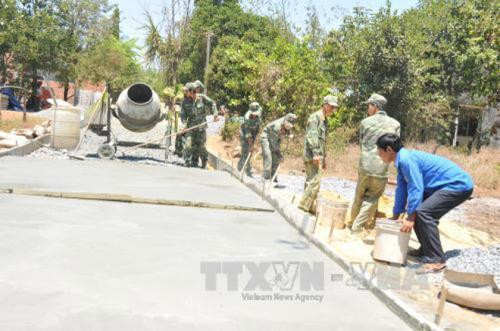Hanoi (VNA) – The number of communes meeting all criteria of new-stylerural areas is expected to reach 3,300 – 3,400 (or 37 – 38 percent of the totalcommunes across the country) this year, according to the Coordination Office ofthe national target programme on new-style rural.
Atthe district level, the number will reach at least 53.
Atotal of 3,069 communes and 43 districts earned the title of new-style ruralarea as of the end of 2017.
Alsothis year, the number of communes meeting less than five criteria is expectedto fall below 100.
Accordingto Nguyen Minh Tien, head of the office, the volume of rural roads built duringthe past six years was more than five times the volume built from 2001 – 2010.
Asof the end of 2016, all communes nationwide were connected to the nationalpower grid, 99.7 percent had primary schools and kindergartens, 99.5 percent hadmedical stations, 99.4 percent had concrete roads to communal centres, and4,498 communes had concentrated water supply stations.
Asmany as 3,854 value chain-based production models have been established,helping form some large-scale production areas.
Inparticular, the programme on “One Commune, One Product”, successfullypiloted in Quang Ninh province, has been expanded to many localities and becomeone of the focuses in rural economic development.
TheMinistry of Agriculture and Rural Development has coordinated with the VietnamWomen’s Union (VWU) to encourage women’s involvement in the new-style ruralarea building programme.
MARDMinister Nguyen Xuan Cuong highlight the increasingly important role of women inagriculture and new-style rural building, pointing to the fact that malelabourers tend to shift to non-agricultural sector and move to urban areas towork.
Womenplay the central role in socio-economic, cultural development, participatedirectly and actively and encourage their family members to join in infrastructurebuilding and agricultural restructure, Cuong added.
Large-scaleagricultural cooperatives and farms will be developed with application ofscience and technology towards connected and safe production.
Researchwill be conducted on developing climate change-resilient livelihood models forwomen, while the project on assisting women’s start-ups in agriculture andrural areas will be accelerated.-VNA






























